#thyssen bornemisza museum
Text

Jacob van Loo (1614-1670)
"Group of Musicians" (c. 1650-1652)
Oil on canvas
Dutch Golden Age
Located in the Thyssen-Bornemisza Museum, Madrid, Spain
#paintings#art#artwork#genre painting#genre scene#jacob van loo#oil on canvas#fine art#dutch golden age#baroque#thyssen bornemisza museum#museum#art gallery#dutch artist#musician#musical instruments#clothing#clothes#1650s#mid 1600s#mid 17th century
93 notes
·
View notes
Text
More Artist Decorated Heart Vases for the TotCor Project
We introduced you to the TotCor Project Heart Vases around Valentine’s Day a few years ago. Still wishing we’d bought every single one, the beautiful heart-shaped ceramic vases come in many different colors and special artist editions. There are a few new ones available worth noting since our last post on them.
Artist Decorated Heart Vases
Artist decorated ceramic heart vases handmade in…

View On WordPress
#art vases#artist-decorated#ceramic art#heart shaped vases#heart vases#Marre Moerel#Rosa Cortiella#Thyssen Bornemisza Museum#TotCor Project Heart Vases#valentine&039;s day art#valentine&039;s day gifts
0 notes
Text
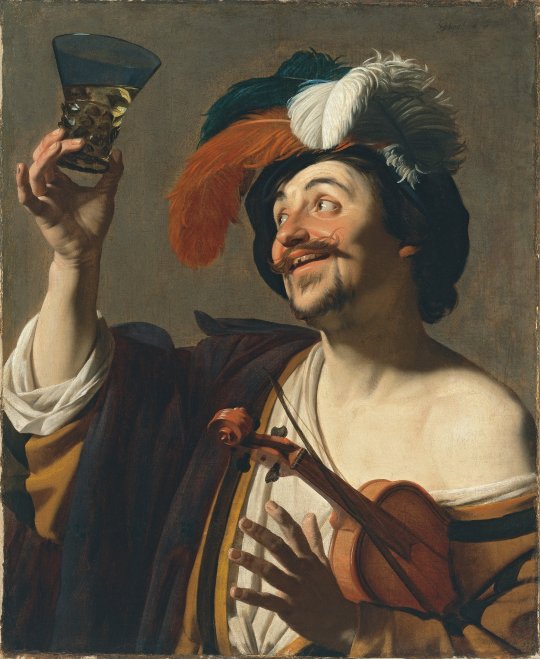
The Happy Violinist, Gerard van Honthorst, ca. 1624
#art#art history#Gerard van Honthorst#Gerrit van Honthorst#portrait#portrait painting#genre painting#genre art#Dutch Golden Age#Caravaggism#Caravaggisti#Utrecht Caravaggisti#Baroque#Baroque art#Dutch Baroque#Dutch art#17th century art#oil on canvas#Thyssen-Bornemisza Museum#museo thyssen bornemisza
135 notes
·
View notes
Text


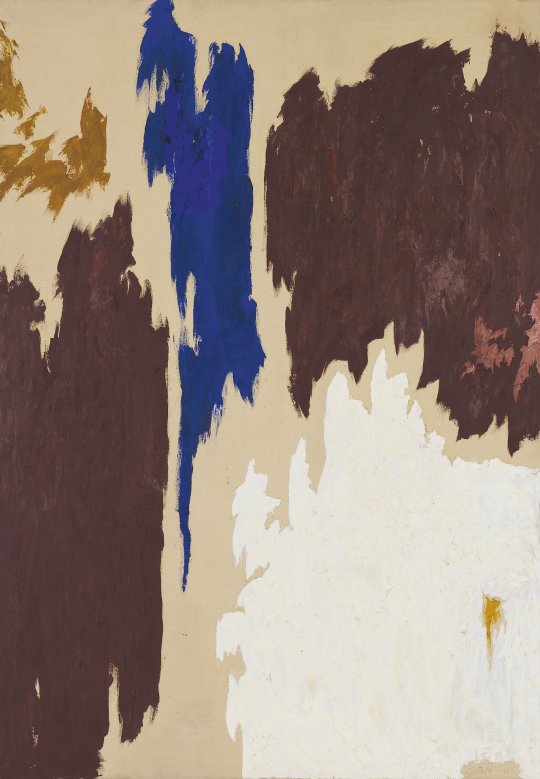
Barnett Newman, The Promise, 1949. Whitney Museum of American Art, New York
Mark Rothko, Four Darks in Red, 1958. Whitney Museum of American Art, New York
Clyfford Still, 1965 (PH-578), 1965. Museo Nacional Thyssen-Bornemisza, Madrid
8 notes
·
View notes
Text

ab. 1470 Master of the View of Saint Gudule - Clothing the Naked
(Thyssen-Bornemisza Museum)
96 notes
·
View notes
Text
Finally I'm able share some good news
Wild festivals, exquisite fruit-bowls and unusually realistic renderings of motherhood and female friendship – not to mention a glimpse of Lady Hamilton as an enthusiastic follower of Bacchus – will go on show in Madrid on Tuesday as one of the country’s most famous galleries seeks to spike the patriarchal canon of art history with a new, and avowedly feminist, exhibition.
The show at the Thyssen-Bornemisza – called simply Maestras (Women Masters) – uses almost 100 paintings, lithographs and sculptures to show how female artists from the late 16th to the early 20th centuries won recognition in their own lifetimes, only to find their works forgotten, erased or consigned to dusty storerooms.
Organised into eight chronological sections that reflect artistic and social changes, Maestras also explores how female artists, gallerists and patrons worked together to create and celebrate art while living and working in the grip and gaze of sexist, and often misogynistic, societies.

Elizabeth Sparhawk-Jones, The Shoe Shop, 1911. Photograph: Elyse Allen/© Art Resource, New York Scala, Florence
Seventeenth-century works by Artemisia Gentileschi, Fede Galizia and Elisabetta Sirani give way to still lifes of fruit and flowers before the exhibition moves to portraits – including Élisabeth Louise Vigeé Le Brun’s Lady Hamilton as a Bacchante – and then to Orientalism, depictions of working women, images of maternity, sisterhood and, finally, to images of female emancipation.
Among the show’s early exhibits is one of Gentileschi’s anguished studies of Susanna and the Elders, while the later pieces include Mary Cassatt’s bleary-eyed Breakfast in Bed and Maruja Mallo’s playful Fair pictures.
“This exhibition speaks positively of that other half of art history,” said the exhibition’s curator, the art historian and critic Rocío de la Villa.
“For a long time, the feminist history of art has been beset by all the handicaps and obstacles that had been put in the path of female creators. For example, they couldn’t access the same artistic training that their male colleagues could. They generally lived in an extremely patriarchal system that denied them their rights and in which their signatures had no legal value.”
There were, however, “certain moments and certain places” in which conditions were more favourable to female artists, and the show aims to offer “a series of windows through which we can see a mutual understanding and a camaraderie between artists, gallery owners and patrons”.
It also reminds visitors that some talented women caught the eye of European royal courts, and that some had husbands who helped them in the studio – or even looked after their children – because they knew that their wives’ gifts far exceeded their own.
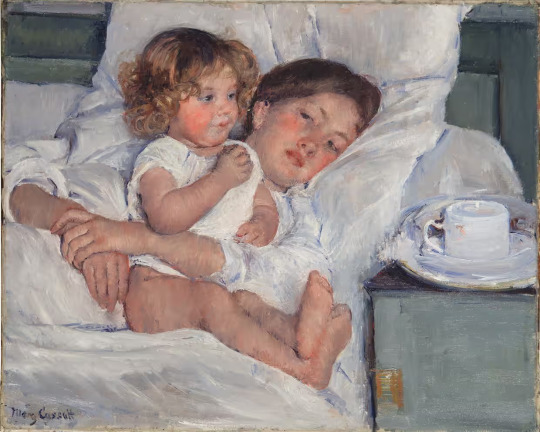
Mary Cassatt, Breakfast in Bed, 1897. Photograph: The Huntington Library, Art Museum
Guillermo Solana, the artistic director of the Thyssen-Bornemisza, said Maestras was another example of the museum’s continuing commitment to feminism, education and addressing the prejudices of the past.
“I’d promised myself that I wouldn’t do any mansplaining today but I can’t help it when it comes to explaining what I’ve learned from the process of doing this exhibition, because I’ve learned a lot,” he told journalists on Monday morning.
“The first thing I learned from this exhibition – and which I think the public will also learn – was so many new names; so many fantastic artists I’d had no idea about and had never heard of. Of course, we knew about Artemisia Gentileschi and Frida Kahlo or Paula Modersohn-Becker, but how many important artists have got away – or been taken from us?”
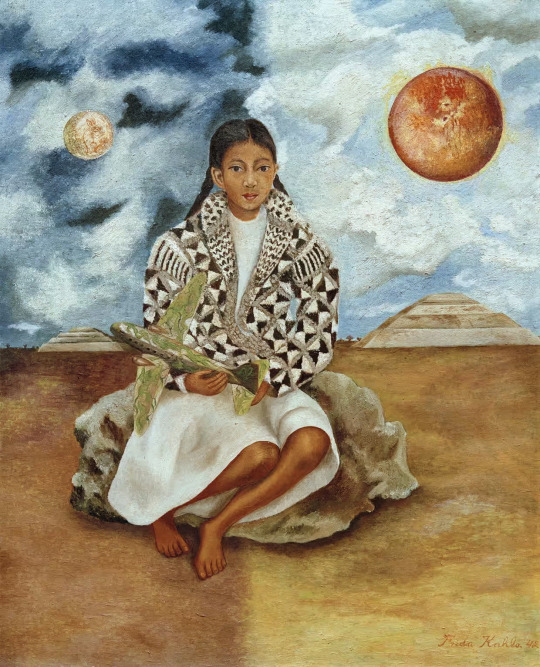
Frida Kahlo, Portrait of Lucha María, A Girl from Tehuacán, 1942. Photograph: akg-images/© Rafael Doniz @ 2023 Banco de México Diego Rivera Frida Kahlo Museums Trust, México, D.F./VEGAP
De la Villa agreed. “The public is going to ask, ‘How can it be that we didn’t know about these female artists?’” she said.
“How is it that their works were in storerooms until recently? Maestras is a feminist exhibition that seeks to emphatically correct the prejudices that have come about as a result of the patriarchy – prejudices that have meant that works by female artists have remained in museum storerooms during the 20th century.”
She said the male-dominated artistic system had always sought to defend itself by denigrating female artists. Equally damaging, she added, was how historians had played down the achievements of women until their voices were silenced and their creations overlooked and then hidden from view.
“When women are hidden, or robbed of their past, they are robbed of their identity,” said De la Villa. “The power of culture is very important. It just can’t be separated from the social conditions we enjoy, or which we suffer.”
Maestras is at the Thyssen-Bornemisza museum from 31 October to 4 February 2024
#Spain#Madrid#the Thyssen-Bornemisza#Maestras (Women Masters)#Elizabeth Sparhawk-Jones#mary cassatt#frida kahlo#October 31st to February 4th 2024
107 notes
·
View notes
Text
Ivan and Phoebe by Oksana Lutsyshyna
Ivan and Phoebe is a novel about a revolution of consciousness triggered by very different events, both global and personal. This is a book about the choices we make, even if we decide to just go with the flow of life. It is about cruelty, guilt, love, passion – about many things, and most importantly, about Ukraine of the recent past, despite or because of which it has become what it is today.
The story told in Oksana Lutsyshyna’s novel Ivan and Phoebe is set during a critical period – the 1990s. In the three decades that have passed since gaining independence, Ukraine has experienced many socio-political, economic, and cultural changes that have yet to be fully expressed. The Revolution of Dignity in 2014 marked a pivotal moment in the country’s history, as it signaled a shift towards European integration and a strong desire to distance itself from Moscow. Prior to this, Ukrainian culture had remained overshadowed by Russian influence, struggled to compete for an audience and was consequently constrained in exploring vital issues.
77 days of February. Living and dying in Ukraine
"77 Days," is a compelling anthology by contributors to Reporters, a Ukrainian platform for longform journalism. The book, published in English as both an e-book and an audiobook by Scribe Originals.
"77 Days'' offers a tapestry of styles and experiences from over a dozen contributors, making it a complex work to define. It includes narratives about those who stayed put as the Russians advanced, and the horror they encountered, like Zoya Kramchenko’s defiant "Kherson is Ukraine," Vira Kuryko’s somber "Ten Days in Chernihiv," and Inna Adruh’s wry "I Can’t Leave – I’ve Got Twenty Cats." The collection also explores the ordeal of fleeing, as in Kateryna Babkina’s stark "Surviving Teleportation '' and "There Were Four People There. Only the Mother Survived."
It also highlights tales of Ukrainians who created safe havens amidst the turmoil, such as Olga Omelyanchuk’s "Hippo and the Team," about zookeepers safeguarding animals in an occupied private zoo near Kyiv, and one of Paplauskaite’s three pieces, "Les Kurbas Theater Military Hostel," depicting an historic Lviv theater turned shelter for the displaced, including the writer/editor herself.
In the Eye of the Storm. Modernism in Ukraine 1900’s – 1930’s
This book was inspired by the exhibition of the same name that took place in Madrid, at the Museo Nacional Thyssen-Bornemisza, and is currently at the Museum Ludwig, located in Cologne, Germany.
Rather than being a traditional catalogue, the publishers and authors took a more ambitious approach. Rather than merely publishing several texts and works from the exhibition, they choose to showcase the history of the Ukrainian avant-garde in its entirety – from the first avant-garde exhibition in Kyiv to the eventual destruction of works and their relegation to the "special funds" of museums, where they were hidden from public view.
These texts explain Ukrainian context to those who may have just learned about the distinction between Ukrainian and Russian art. Those "similarities" are also a product of colonization. It was achieved not only through the physical elimination of artists or Russification – artists were also often forced to emigrate abroad for political or personal reasons. Under the totalitarian regime, discussing or remembering these artists was forbidden. Archives and cultural property were also destroyed or taken to Russia.
"The Yellow Butterfly" by Oleksandr Shatokhin
"The Yellow Butterfly" is poised to become another prominent Ukrainian book on the themes of war and hope. It has been listed among the top 100 best picture books of 2023, according to the international art platform dPICTUS.
The book was crafted amidst the ongoing invasion. Oleksandr and his family witnessed columns of occupiers, destroyed buildings, and charred civilian cars. Shatokhin describes the book’s creation as a form of therapy, a way to cope with the horrors. "During this time my vision became clearer about what I wanted to create – a silent book about hope, victory, the transition from darkness to light, something symbolic," he explains.
Although "The Yellow Butterfly" is a wordless book, today its message resonates with readers across the globe.
A Crash Course in Molotov Cocktails by Halyna Kruk
A Crash Course in Molotov Cocktails is a bilingual poetry book (Ukrainian and English) about war, written between 2013 and 2022, based on Halyna’s experience as an author, volunteer, wife of a military man and witness to conflict.
The Ukrainian-speaking audience is well-acquainted with Halyna Kruk – a poet, prose author and literature historian. Kruk is increasingly active on the international stage, with her poetry featured in numerous anthologies across various languages, including Italian, French, Swedish, Norwegian, Portuguese, Spanish, Polish, English, German, Lithuanian, Georgian and Vietnamese.
For an English-speaking audience, her poetry unveils a realm of intense and delicate experiences, both in the midst of disaster and in the anticipation of it. The poems are succinct, direct, and highly specific, often depicting real-life events and individuals engaged in combat, mourning, and upholding their right to freedom.
130 notes
·
View notes
Text

Reginald Marsh, Battery Park, ca. 1926. Oil on canvas.
"The Battery is one of Marsh's early oils, painted just after his three his three-year stint as a staff illustrator for the New York Daily News where he drew a daily column of theatrical sketches. At the time Marsh was involved in designing theatre curtains for 'The Greenwich Village Follies' and he had recently collaborated with the set designer Robert Edmund Jones on curtains and sets for the Provincetown players. These facts are brought to mind by the stage-like look of this canvas. …
Marsh's narrative skill is already apparent. He dramatically conveys the effect of the wind with the billowing smoke from the tug boats in the harbour and one of the women holding on to her hat in the breeze. The tallest of the men conversing is momentarily distracted by the appearance of the three women and he gazes in their direction. The bright sunny day is conveyed by the clear bright colors and the shadows cast by the figures."
--Gail Levin, Thyssen-Bornemisza National Museum
#vintage New York#1920s#Reginald Marsh#Battery Park#painting#oil painting#Lower Manhattan#New York art#Jazz Age#Roaring 20s#vintage NYC#NY Harbor
72 notes
·
View notes
Text
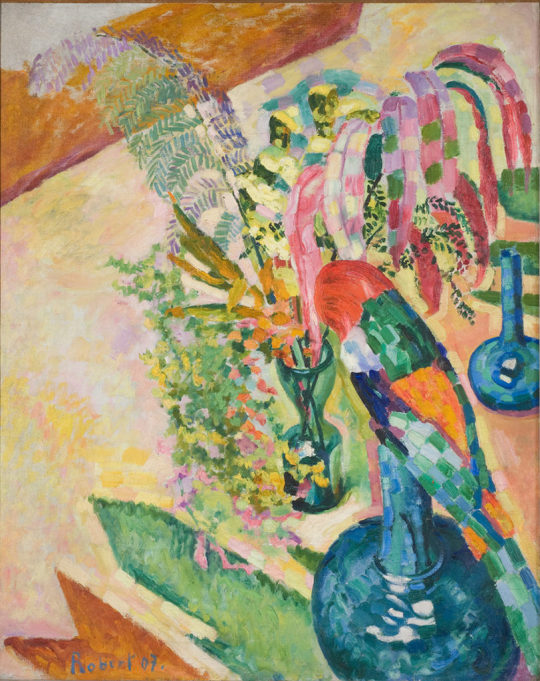
Robert Delaunay (French,1885-1941) • Nature morte au perroquet (Still Life with Parrot) • 1907 • Thyssen-Bornemisza Museum, Madrid
#still life#art#painting#fine art#art history#robert delaunay#french artist#neo impressionism#painter#early 20th century european art#1900s artwork#european modernism#modern art#bold color in art#pagan sphinx art blog#art blogs on tumblr#art lovers on tumblr
24 notes
·
View notes
Text
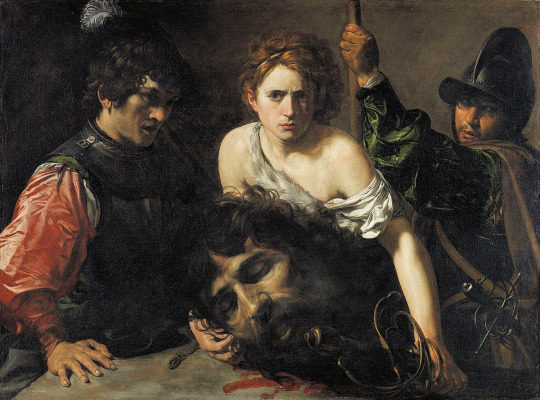
Valentin de Boulogne (1591-1632)
"David With the Head of Goliath and two Soldiers" (1620-1622)
Oil on canvas
Tenebrism
Located in the Thyssen-Bornemisza Museum, Madrid, Spain
#paintings#art#artwork#religious painting#david and goliath#valentin de boulogne#oil on canvas#fine art#tenebrist#tenebrism#baroque#thyssen bornemisza national museum#art gallery#french artist#old testament#christianity#beheaded#beheading#male figure#1620s#early 1600s#early 17th century#clothing#clothes#costume#costumes
962 notes
·
View notes
Text
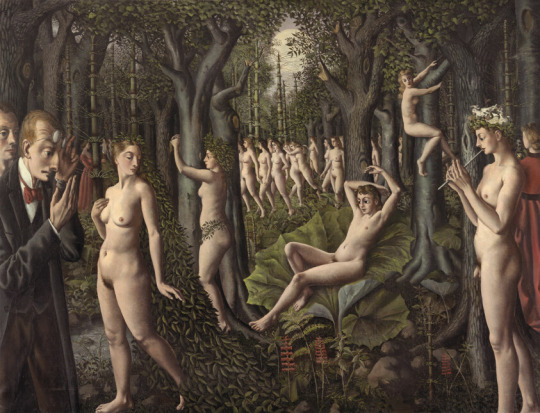
The Awakening Of The Forest (L'éveil de la forêt) • 1939.
Paul Delvaux • 1897-1994 • Belgian • Surrealist
Post #1
Paul Delvaux's canvases contain, among other things, a plethora of female nudes. Like classic nudes, they and their surroundings are painted with precise realism. Unlike classic nudes, however, the women are not posing as such but going about their business within fantasy-filled worlds. They stare vacantly toward the unknown and largely do not engage with one-another. It is as if they are captured in a moment in time. If one were to imagine, though, a Delvaux painting coming to life, these women might very well be engaged in robotic, ritualistic movement - the Stepford wives of a surreal canvas. At times disconcerting, the canvas sometimes include fully-dressed,voiristic men. Enigmatic as they are, Delvaux's women hold a beautiful, enigmatic appeal.
Delvaux's inspiration for his visual imagery came from books he loved as a child. Indeed, the painting above is a recreation of a scene from Jules Verne's Journey to the Center of the Earth. He also utilized his childhood fears and dreamscapes as creative material for his visual narratives.
Though not depicted in this post (perhaps next post) skeletons, trains and train stations, and architecture are common themes in Delvaux paintings.

La pause du jour (The Break of Day) • 1937 • The Guggenheim Museum. [This was the first Surrealist painting Peggy Guggenheim added to her collection.]
Below: Femme dans une grotte (Woman in a cave) • 1936 • Oil on canvas • Thyssen Bornemisza Museum, Madrid

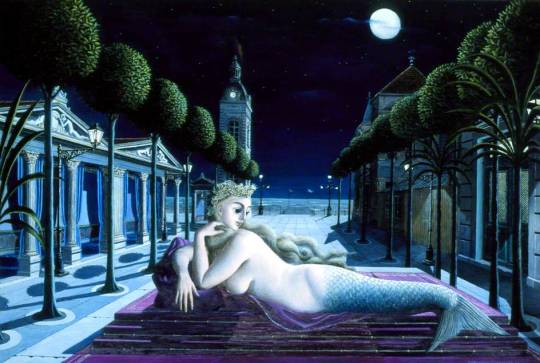
La Sirène au claire de lune (A Mermaid in Full Moonlight) • 1940 • Southampton City Art Gallery, Britain. [ As a boy, Delvaux loved the story of the Sirens in The Odyssey.]

Le jardin nocturne (The Night Garden) • 1941 • Location unknown
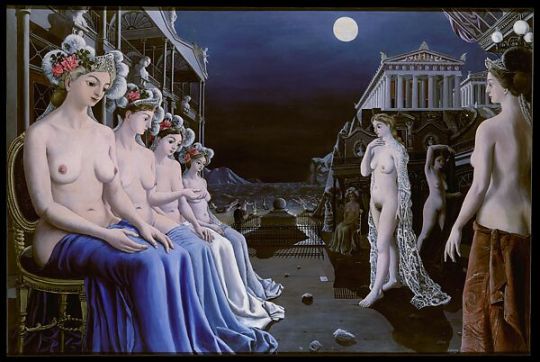
Les grandes sirènes (The Great Sirens) • 1947 • Metropolitan Museum of Art, New York City
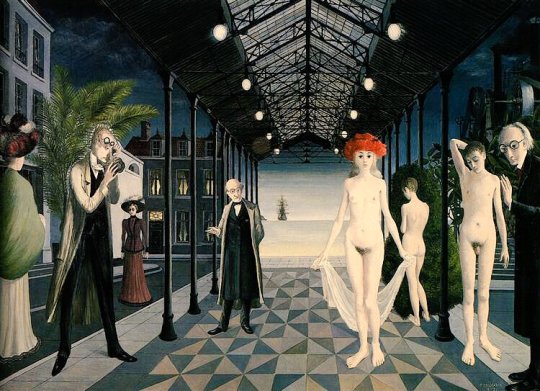
Hommage à Jules Verne • 1971 • Fondation de Paul Delvaux, Saint-Idesbald, Belgium
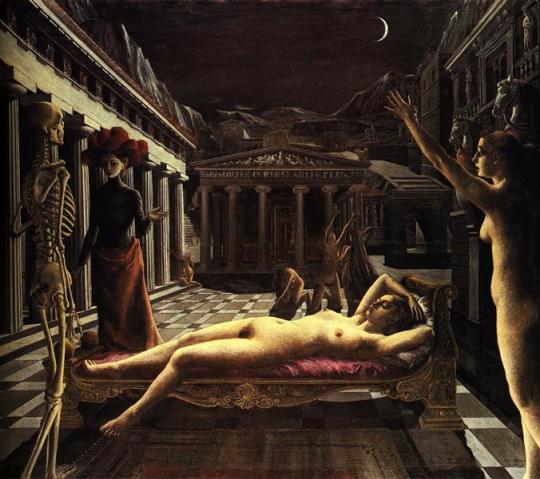
La Vénus endormie (The Sleeping Venus) • 1944 • Tate Modern, London
#art#painting#fine art#art nude#bannedonpinterest#paul delvaux#art of the subconscious#20th century art#surrealism#belgian artist#metaphysical art#sirens#mermaid#fantasy worlds#oil painting#mythological painting#guggenheim#art institute of chicago#the metropolitan museum of art#delvaux foundation#jules verne#banned on pinterest#art history
110 notes
·
View notes
Text

Beach Scene, Winslow Homer, 1869
#art#art history#Winslow Homer#genre painting#children in art#American art#19th century art#Thyssen-Bornemisza Museum#oil on canvas
674 notes
·
View notes
Text
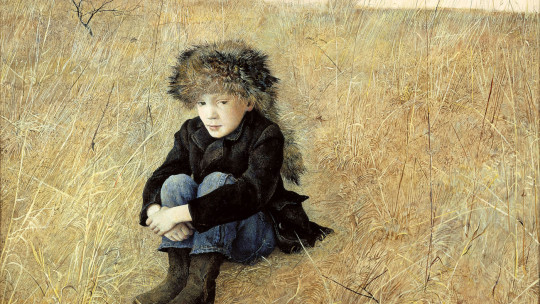
Faraway (1952), Andrew Wyeth
Dry brush on paper
13 7/10 × 21 1/2 in | 34.92 × 54.61 cm
When other mid-20th century artists were drawn toward abstraction, Andrew Wyeth continued his exploration of domestic realism, painting both interiors and exteriors of the farm and industrial buildings of the Pennsylvania countryside, and, in the summers, the clapboard houses and stark landscape of the Maine coast. After his father N.C. Wyeth died in a 1945 car accident, he began to incorporate images of people into his paintings, most famously his neighbor Helga Testorf. Rendered in egg tempera, Wyeth's keenly observed images have a pared down sparseness that gives them a palpable sense of quiet. Wyeth was the first visual artist to appear on the cover of Time magazine and the first living American-born artist to have a show at The Metropolitan Museum of Art in New York.
25 notes
·
View notes
Text

The Supper at Emmaus by Mathias Stomer (c. 1599-1652). National Museum Thyssen Bornemisza, Madrid
47 notes
·
View notes
Text

1525 Gabriel Zehender - Portrait of a Married Couple
(Thyssen-Bornemisza Museum)
96 notes
·
View notes
